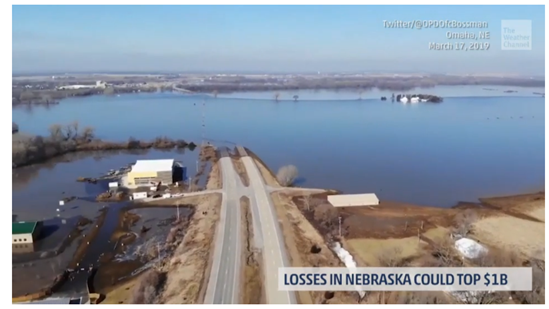Telling your ag story
Shared Values | March 20, 2019
Every spring brings a new feeling of hope. In agriculture, it’s calving, kidding and lambing season. It’s a daily conversation about weather with every neighbor and acquaintance farmers encounter to discuss the optimal time to plant this year’s crop. Farmers are the most cautiously optimistic group of people you’ll meet despite the tumultuous working conditions they experience annually. In wind, rain, blizzards, sub-zero temps, floods, drought and fires farmers are still out there tending to their animals and land. It’s hard work, but we’ve never met a farmer that didn’t love it.
This winter has been an especially challenging one, with record cold, rain and snow. Flooding has devasted the Midwest, with staggering losses and livestock and the crop in jeopardy. Many people are seeing images of farms on the news and have questions.
 |
|

Images from The Weather Channel.
It’s important to tell the story of agriculture. To tell people removed from the farm why farmers get up in the middle of the night to check on their animals or work 18-hour days to get the crop in or out of the field before the next rain.
Most people are three generations removed from the farm, with only two percent of the population accounting for farming and ranching families (American Farm Bureau Federation). That makes it difficult to have level-headed conversations with consumers that believe GMOs are bad for you, organic is healthier and free-range chickens lead happier lives.
Here are three tips on how to tell your ag story:
Learn how others are communicating effectively through shared values here.